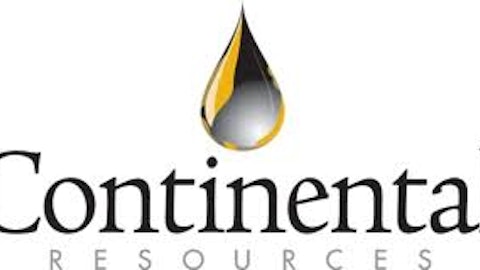
Photo credit: Flickr/StockMonkeys.com
The U.S. shale energy boom is beginning to trickle down into the economy. According to research firm IHS, America’s energy renaissance is having a “real and tangible” economic impact. How real and tangible? It boosted the average household’s disposable income by $1,200 last year. As good as that number might sound, the best is likely yet to come.
The numbers are pretty compelling across the board. In addition to the $163 billion in aggregate savings primarily driven by lower energy costs, employment related to energy has added 2.1 million jobs to the economy. What’s really incredible is that the energy boom has even added 44,000 new jobs in the state of New York, which has continued to reject fracking because of environmental and health concerns.
The shale boom has really been a game-changer for our country. Wider use of cheaper, cleaner natural gas has helped to curb carbon emissions while also keeping electricity costs at bay. Meanwhile, increased oil production has lowered imports to just 40% of total consumption, the lowest level since 1991. Looking ahead, we can expect continued production growth as well as increased domestic consumption, which is a recipe for an even greater future economic impact.
Over the next decade, production from the prolific Bakken shale in North Dakota could double from its current rate of 750,000 barrels of oil per day. One company really looking to drive that future growth is Continental Resources, Inc. (NYSE:CLR). It’s currently the No. 1 leaseholder in the region, and it’s leading the charge to explore the lesser known Three Forks, which lies below the Bakken and could contain just as much oil. Overall, the company believes that it can triple its oil production by 2017.
Other oil-producing regions, such as the Eagle Ford shale, the Gulf of Mexico, and the Permian Basin, are all expected to deliver more oil over the next decade. According to the International Energy Agency, the U.S. will account for a third of all new oil supplies over the next five years. Legacy oil plays such as the Permian are expected to see the rate of production growth accelerate from 7% the past five years to 12% over the next five. That’s helping natural gas producer Devon Energy Corp (NYSE:DVN) quickly transition into more of an oil producer. Just last quarter, the Permian enabled Devon Energy Corp (NYSE:DVN) to grow its U.S. oil production by 36%. Meanwhile, the company unveiled the promising new oil shale play called the Woodford Shale in Oklahoma.
Even as Devon Energy Corp (NYSE:DVN) refocuses its efforts on oil, the natural gas boom thanks to the Marcellus has really changed the American energy landscape. Low-cost producer Range Resources Corp. (NYSE:RRC) believes it can grow its production by 20%-25% for as far as it can see. It believes the resource potential it controls could be 13 times higher than its current proved reserves. For perspective, its proven reserves alone at the end of last year were 6.5 trillion cubic feet of natural gas equivalent. That number alone nearly represents the entire amount of gas used by industrial consumers in the U.S. last year. We’re talking about a massive natural gas resource here that’s only just beginning to be developed.
Those industrial consumers really hold the keys to the next great wave of the energy boom. Going back to the IHS report, it projects that a flood of energy-related investments totaling $346 billion will provide a big boost to the energy-related manufacturing industry by 2025. The industry has already seen a flood of capital, especially among heavy natural gas consumers such as petrochemical companies. The Dow Chemical Company (NYSE:DOW), for example, is spending more than $4 billion to access cheap natural gas and convert it into the building blocks of plastic. Meanwhile, steel producer Nucor Corporation (NYSE:NUE) has invested in a steel plant in Louisiana to use natural gas and combine it with scrap to make steel.
As the projects from Nucor Corporation (NYSE:NUE), The Dow Chemical Company (NYSE:DOW), and others come online over the next few years, it will do two things. First, it will lower the cost of products here in the U.S., and second, all of these projects will add manufacturing jobs. When combined, that’s a recipe for economic growth. The bottom line here: The $1,200 that hit consumers’ pockets last year thanks to the energy boom is just a taste of what’s yet to come.
The article America’s Energy Boom Saved You $1,200 originally appeared on Fool.com and is written by Matt DiLallo.
Fool contributor Matt DiLallo has no position in any stocks mentioned. The Motley Fool recommends Nucor and Range Resources and owns shares of Devon Energy.
Copyright © 1995 – 2013 The Motley Fool, LLC. All rights reserved. The Motley Fool has a disclosure policy.





